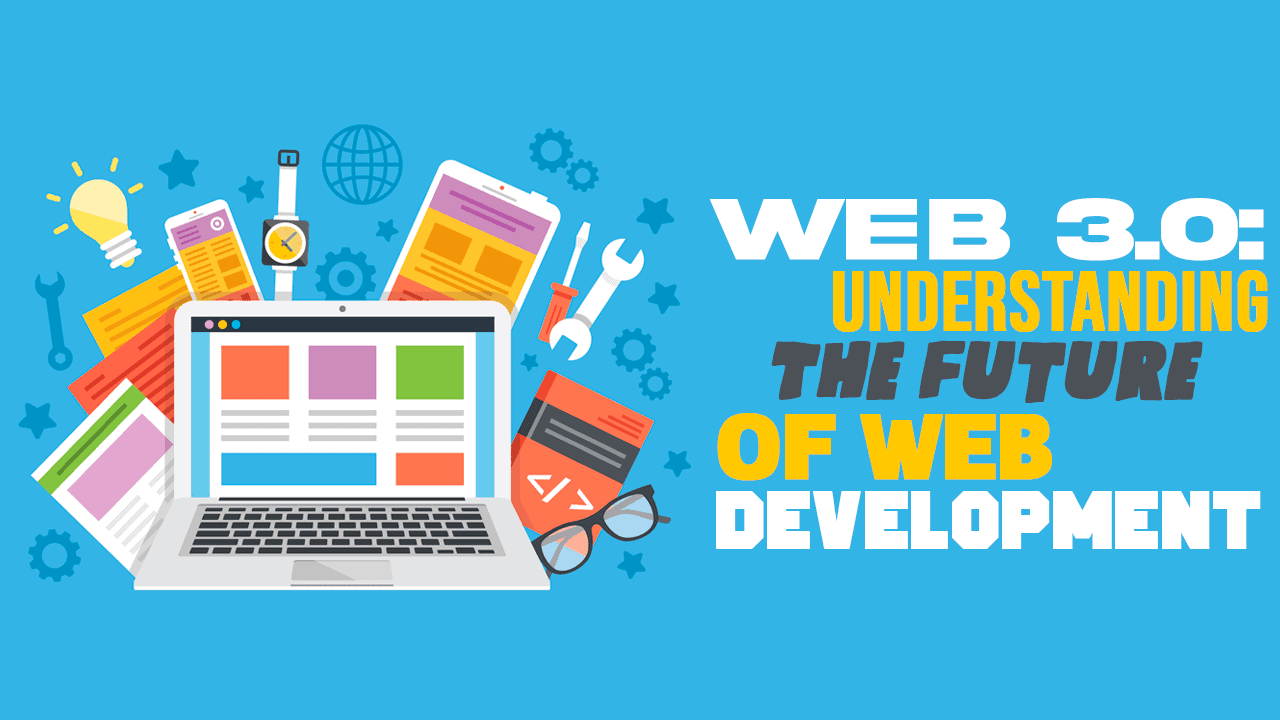
by Kanika Vatsyayan | Mar 25, 2022 | Blockchain, Cloud, Cybersecurity, Guest Post, Web Development, Web Services
 The future seems unimaginable without the internet—especially after all the advancements in business technology, software, applications, and devices.
The future seems unimaginable without the internet—especially after all the advancements in business technology, software, applications, and devices.
Still, from the perspective of tech enthusiasts, the internet is still in its early childhood days, as—even though it has evolved in a relatively short time—it still possesses a scope for significant enhancements.
Therefore, we could say that, at present, we have only scratched the surface of its potential. Indeed, any business transformation in the near future is extremely likely to depend on the internet for its evolution.
In this post, I will highlight the revolutionary, decentralized, and open version of the web known as Semantic Web or Web 3.0. At the same time, I’ll talk about the applications of Web 3.0, underlining the distinctions between Web 2.0 and Web 3.0 development and highlighting why Web 2.0 developers need to learn development for Web 3.0.
Features and Differences Between Web 3.0 and Web 2.0
There are so many new features that help Web 3.0 stand apart from what we have experienced with Web 2.0. The most significant factor that defines the entire approach to Web 3.0 is decentralization.
In other words, Web 3.0 has everything needed to improve the internet by working on certain revolutionary advancements that could be the essence of the digital revolution. These include:
- Open: Allowing open-source development by an accessible and open community of developers. In other words, “open” can be defined as an ethos that transforms accessibility, community governance, and equitability into web service and protocol.
- Trustless: Allowing public and private network interactions without any trust concerns or involvement from a trusted third-party source. To simplify, “trustless” refers to a network where users can rely on network performance and output without having any restrictions to trust anyone else involved in the network.
- Permission-free: Allowing users and suppliers to participate in public or private projects without any governing body involved. Such a network environment would allow the secure and flexible transfer of information.
The apps that are developed in Web 2.0 are created and deployed on a single server, and the data is often stored within a single database that is hosted by a cloud service provider company.
On the other hand, Web 3.0 apps are likely to be built on decentralized networks operating through a large number of peer-to-peer servers—as I will discuss in more detail later in this post.
Essentially, Web 3.0 would require developers to compete on yielding the highest quality service and establishing a highly secure decentralized network. This is closely related to the blockchain concept where the Web 3.0 network protocols would be established over decentralization.
In other words, anyone who has contributed to the development or governance of the projects can receive financial incentives or rewards such as crypto tokens. And when we say network protocols, these include provisions on bandwidth, computation, hosting, identification, storage, and other services that were earlier managed by cloud service providers.
Since the current web structure needs users to pay for using the protocol, just like using the services offered by cloud providers, Web 3.0 would work by distributing money directly to the developers and network participants.
Therefore, developers who are familiar with Web 2.0 and Web 3.0 could earn a living by participating in protocol development by sharing any technical or non-technical skill set that can improve Web 3.0.
Such a structure would not only aid decentralization but potentially help cut intermediaries, thus passing all profit to developers directly. Moreover, to ensure that network participants get rewarded for their contribution, many web infrastructure protocols provide utility tokens to dictate protocol function. This concept of reward is similar to the one used by Ethereum and other native blockchain technologies.
Why Do Web 2.0 Developers Need to Learn Web 3.0?
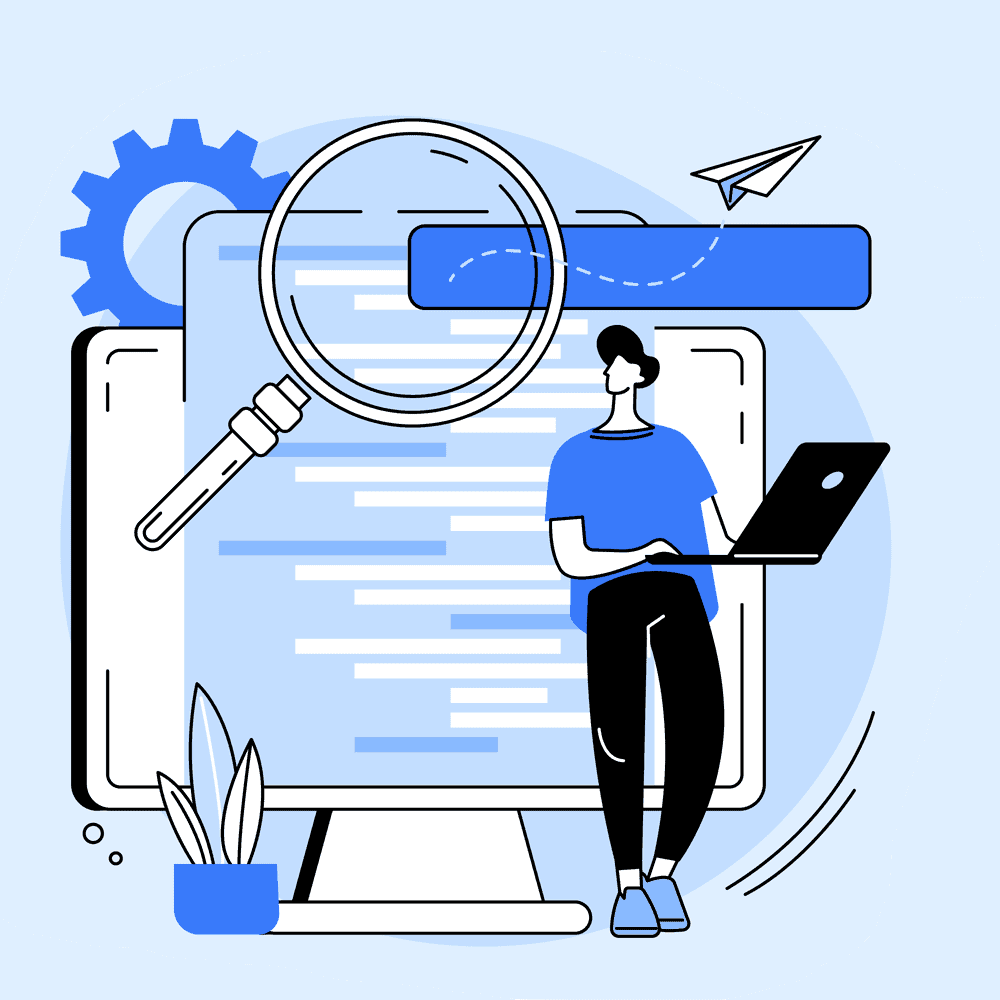 The web has extensively changed over the past few years. The same could be clearly witnessed from the fact that decentralization, crypto, and AI have already disrupted the way business formation and transactions work.
The web has extensively changed over the past few years. The same could be clearly witnessed from the fact that decentralization, crypto, and AI have already disrupted the way business formation and transactions work.
Since the potential of the web is still unrecognizable as a progressive technology, moving towards a decentralized world makes it crucial for developers to align with Web 3.0. From earning opportunities to taking ownership of what is developed for the web, Web 3.0 is a go-to technology for developers who need to grow.
Let us quickly jump on two of the most significant and potential reasons why developers need to learn Web 3.0 before we discuss it in more detail.
The Decentralization Wave
Decentralization is the essence of Web 3.0, and it has extensive potential when it comes to the web and beyond. Thus, having developers who understand innovation and have a knack for enabling decentralization is the key to creating a high-quality ecosystem.
This could allow developers to make the most of their careers with Web 3.0. They can have access to direct ownership on developments made, thus having better earning opportunities with no third parties involved.
Ownership, Tokens, and More
Web 3.0 has compensation and data ownership as some of the most significant benefits developers could yield while using it. On top of that, decentralization and blockchain technology will likely get more scalable.
If you are a developer who reacted to the buzz and started moving towards a decentralized future, learning Web 3.0 is necessary. In short, working on Web 3.0 could drive financial output as well as give a chance to the developers to contribute and own the contributions made to the Web 3.0 era.
Upgraded Identity Features
When we say IDs or identity in Web 3.0, we are referring to a completely different function compared to the previous versions. The IDs in Web 3.0 are the wallet address book containing details of the users interacting with the app.
This is done to overcome the challenge of Web 2.0, where users define their identity using emails and passwords, making it easy to lose information or need frequent updates to keep things secure.
With Web 3.0, the IDs or wallet addresses of users are completely anonymous unless a user chooses to share their identity publicly. Moreover, Web 3.0 would allow users to smoothly transfer their ID from the same wallet to different decentralized apps.
Such a model as Web 3.0 would require developers to use identity protocols like Ceramic or IDX to bypass identity layers and conventional authentication while allowing self-sovereign identification. Additionally, the process requires an effective check on working on an approach that overcomes the privacy issues involved with conventional identification, thus opening doors for much greater opportunities with Web 3.0.
To aid security, organizations like the Ethereum Foundation are working on RFP (Request for Proposal) that can help simplify the documentation to take Web 3.0 further. With such convenience, Web 3.0 allows users to experience open, trustless, and permissionless applications.
Web 3.0 and the Applications
There is no doubt that Web 2.0 has been huge and has taken the world closer to the next dimension of the internet. The previous decade also held a paradigm change calling for Web 3.0 growth.
Here’s are a few significant points that can help you have a better idea of the entire Web 3.0 concept:
- Web 3.0 or Semantic Web made way for revolutionary applications. Web 3.0 is a medium to connect humans and technologies like AI to create a more reasonable and personalized web. In other words, Web 3.0 will harness the potential of AI and ML to process information just like humans do with the use of NLP and other concepts of the Semantic web.
- Since Web 3.0 is concerned with challenges originating from the internet of the past, it compliments the need for coordination, thus incentivizing content providers, data, services, and work. The biggest predictable challenge that Web 3.0 will likely cover is with open, trustless, and permissionless concepts is instability.
- Web 2.0 and Web 3.0 are both distinctively organized. Web 2.0 took us closer to the cloud networks while making the world more mobile and introducing the power of social media. On the other hand, Web 3.0 is more about AI and decentralization. Hence, a world using Web 3.0 is something that cannot be handled by a single corporation monitoring the global network.
- Web 2.0 made way for data centers to organize, store, and use data generated from a large number of users. Web 3.0 has the potential to replace data centers with decentralized internet, allowing appliances, cars, laptops, mobile devices, and sensors to hold the data. Such a change could allow expanding bandwidth to hold 175 zettabytes of data available in the global datasphere by 2025.
- The decentralized networks on Web 3.0 would allow people to take ownership of their data. From health reports to wellness data, anything available on the web will be under complete control of the user, giving them authority to eliminate third-party organizations and have the command to share ownership and privacy.
- Since AI and ML technologies have reached an intelligence level where they can aid in life-saving predictions, integrating the technology into a decentralized environment could help bring more data in to allow big advancements through precise predictive modeling.
All in all, Web 3.0 calls for a future that allows people and machines to interact with each other on data or passing value without involving any third parties. It can even help to create a futuristic web that is human-centric and preserves the privacy of its users with a peer-to-peer network model.
Keeping all that in mind, let’s take a quick look at the most effective applications of Web 3.0 that can make way for the next web revolution.
Built-in Seamless Payments
 Over the years, the entire idea of payments and transactions has changed. Especially, the use of tokens has made payments a completely borderless process, with brands like PayPal and Stripe delivering the much-needed seamlessness between payer and payee.
Over the years, the entire idea of payments and transactions has changed. Especially, the use of tokens has made payments a completely borderless process, with brands like PayPal and Stripe delivering the much-needed seamlessness between payer and payee.
As a downside, these methods are complicated and potentially inefficient, and risky, as they demand the use of personal data, which can be easily compromised.
However, Web 3.0-based payment applications are based on the crypto concept, which makes borderless transactions extremely simple and safe without giving up sensitive data or personal details. A common example is Solana, a network that allows transactions in fractions of milliseconds at a very minor cost without making the user share their personal information.
Such a transactional process does not even involve any of the forms or procedures that are part of networking in the present modes of transactions. Web 3.0-based crypto wallets only need users to install an application and simply send/receive money, bypassing any gatekeeping or third-party networking services that collect user information.
Business Formation Redefined
Since crypto and tokens are a significant part of the defining protocols and the development of Web 3.0, tokenization can also aid in creating the token economy. A quick example of using Web 3.0 for business formation can be perceived in the form of token-based investment.
In other words, using tokenization could help prevent business loss, especially when most businesses these days get funding in form of liquid money through hired venture capitalists in exchange for business equity.
Such a business structure often calls for legal issues when an investor wants to step out or move in. For instance, businesses that have an investment in the form of money in exchange for stakes find it difficult to dilute when people start to experience a change in priorities.
But businesses that are formed on the Web 3.0 concept can create value from digital currency like tokens which are easier to split on ownership. Unlike liquid investments, where a stakeholder invests in time, money, and labor with no confirmed returns, with tokenization, the investors could get the returns reflected immediately in the form of tokens that grow in value.
Though it may appear like a more futuristic approach to business formation, this would allow anyone on the web to invest in the business idea or construct it. It can even facilitate an organization’s growth, as anyone who needs to leave the organization could get a certain number of tokens—allowing no dilution of the business.
Moreover, stakeholders could vote on their tokens to facilitate changes in future projects, or people could hold up to their share of tokens, to begin with, some new initiatives.
Web 3.0 Has Already Arrived!
An approach like Web 3.0, which drives decentralization, can even help foster transparency, allowing stakeholders to be informed of every sale and purchase made on the business stocks in a Web 3.0 space. And surprisingly, the same is already happening in the Web 3.0 era.
Radicle, a GitHub alternative based on the decentralization concept, is one such app that allows stakeholders to work on the governance model of the business.
Moreover, Gitcoin is another initiative that allows developers to get compensated for participation in open-source projects. Brands like Audius, The Graph, SuperRare, and Uniswap have already started issuing tokens in exchange for ownership, participation, and governance.
Apart from this, there are Decentralized Autonomous Organizations that provide a unique Web 3.0-based investment approach for people who have thought of the corporation and need to garner investment from venture capitalists or developers.
The organizations work on the tokenization model, where the entire organizational structure is created and run on real and equitable ownership. Furthermore, the ownership distributed between stakeholders is then used to distribute incentives in more fascinating ways.
Though the whole concept of Decentralized Autonomous Organizations or DAOs is extremely wide, the future of building businesses or things gets an extraordinary vision with Web 3.0. Therefore, it is vital that Web 2.0 developers should make the most of the decentralization concept making the internet a more personal space for the users.
Web 3.0: A Highly Equitable Internet
Web 3.0 can create a highly equitable internet where everybody—from users to developers—will experience sovereignty. Whether it is control over the information, time, resources, or profit, Web 3.0 can help cultivate a secure ecosystem on the web.
Besides, contributing to the blockchain protocols in Web 3.0 could help developers and users to get compensated for all the investments they make on the web, right from their development to defining the protocol.
In a nutshell, Web 3.0 is the doorstep to overpowering the exploitative web, which involves unlawful practices that not only capture the user data on centralized repositories but restrict the profit and growth for all.
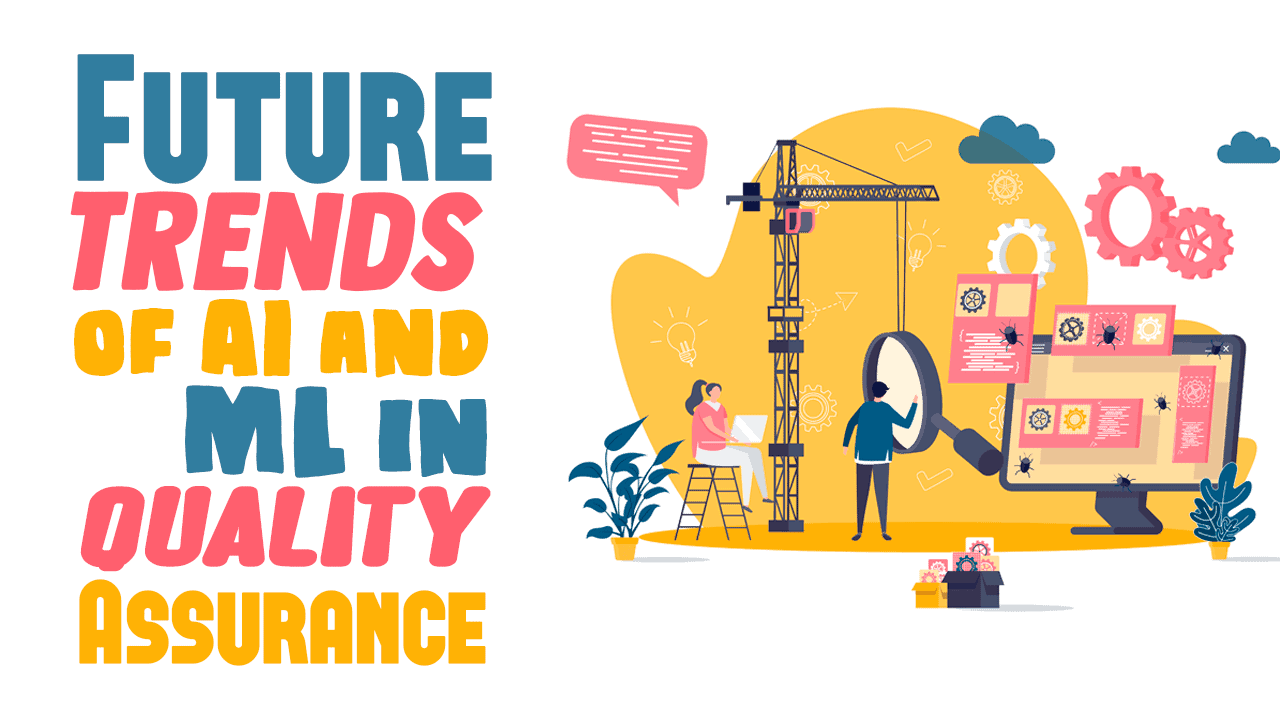
by Kanika Vatsyayan | Feb 8, 2021 | Artificial Intelligence, Guest Post, Learning, Process Improvement, Programming, Testing, Tools
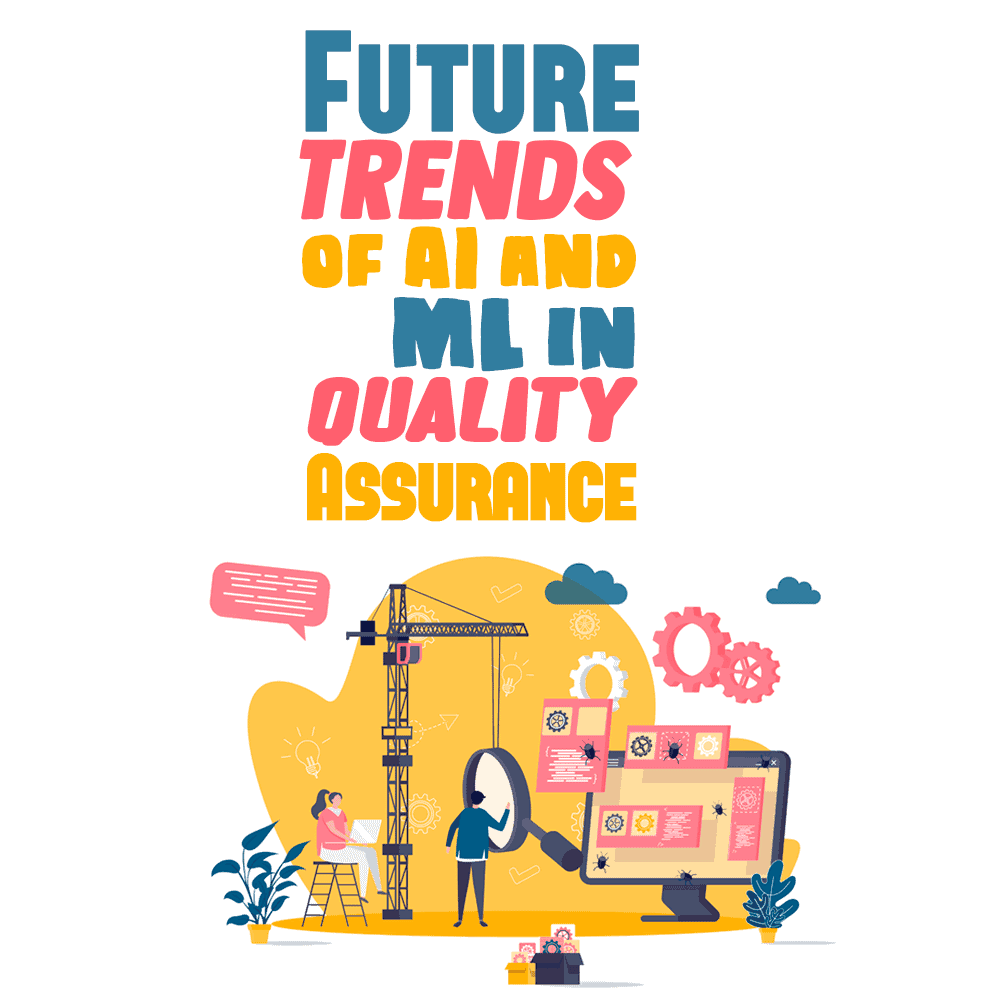 Quality Assurance (QA) plays an important role in the software development process because it not only helps discover defects early in the development cycle but also saves a lot of time, money, and frustration. Using analytics, artificial intelligence (AI) and machine learning (ML) can be a part of your business strategy as the first step to grow revenue in companies and deliver a better customer experience.
Quality Assurance (QA) plays an important role in the software development process because it not only helps discover defects early in the development cycle but also saves a lot of time, money, and frustration. Using analytics, artificial intelligence (AI) and machine learning (ML) can be a part of your business strategy as the first step to grow revenue in companies and deliver a better customer experience.
Although it is hard to entirely replace the human element, by incorporating AI and ML, it is possible to improve QA testing in an organization, as we will see in more detail in this post.
According to Gartner, AI will drive infrastructure decisions through 2023. Advancing AI pilots into production requires specialized infrastructure resources that one can expand and develop. To ensure high-performance rates, the enterprise IT team should regularly optimize the AI models. They may need to combine ML models or standardization data pipelines with live data sources to get real-time decisions.
In this post we’ll take a closer look at AI and ML, and particularly at how they can help the QA testing process, greatly improving your productivity and operations in general.
Difference Between Artificial Intelligence and Machine Learning
Artificial Intelligence is described as the simulation of human intelligence in machines. It is a simplified problem-solving process for humans and allows the software to manage tasks without being explicitly programmed. Artificial intelligence aims to involve reasoning, learning, and perception. This technology is highly used in different industries, including healthcare and finance.
Machine learning, on the other hand, is an application of AI that helps machines access information and supports them while performing various tasks. ML technology helps us understand learning algorithms and enables systems to obtain secret insights.
From smart speakers and smart coffee makers, to smartphones and smart cars, such devices can simplify our everyday life and make our job easier. Advanced technologies like artificial intelligence and machine learning have become common technologies for high-stakes industries such as finance, automotive, and medical.
DevOps teams should implement a strong strategy for QA testing to ensure that the application you develop by integrating the AI/Ml technologies is safe for the public and keeps their personal data protected from cybercriminals.
Know the End-Goal of Software Testing
Once you’re done with the development, you can move to the testing phase of the system development life cycle (SDLC). QA teams need to confirm that end-users can use the application per their expectations. It is necessary to evaluate the following parts of the end-to-end testing:
- The scope of the research
- Targeted errors/bugs
- Customer behavior
- Implementation of planned test cases
Make sure the deployment success depends upon the E2E (end-to-end) testing plans. It is crucial to prepare short and quick testing cycles, especially if you have particular time constraints and ever-changing requirements. Based on your effective test cases or test cycles, you can ensure an application of high quality and satisfy the specific needs of end-users.
Best Approach To Follow for Improving the Testing Process with AI and ML
With all this in mind, the question then is: How can AI and ML help us improve QA testing? The future is of course open to amazing opportunities, but the five areas listed below are those you can begin considering now.
Consider How Regression Testing Is Performed
Due to the need for more rapid deployment, it is extremely important to consider how regression testing is performed, especially if you as a human are unable to produce accurate results. When it comes to making changes in the UI of an application, ML and AI help in examining and determining shapes, sizes and colors.
While manual testing, most QA testers miss some necessary steps like the validation of the changes that you can better do with AI. Therefore, whenever dealing with more tedious tasks, companies should perform regression testing using AI. On the other hand, machine learning can be used to generate successful test cases.
Choose a Time-Saving Approach
AI allows you to save time in software testing, which is not possible with manual testing. AI can help you solve complex tasks such as early detection of bugs, increase in overall test coverage, and improved accuracy. It allows the teams to focus on the creation of innovative new features.
The benefit of involving AI in the software testing process is that both the QA staff and developers are able to spend less time in planning, optimizing, writing, and maintaining end-to-end tests. Moreover, using AI allows you to free up your resources for creating new products and helps you speed up the delivery timelines.
Choose the Right Tests
You must know how many tests you need in order to pass QA. After passing QA, you should verify that no issues are found after introducing a new change in the application.
For this process you can use ML because it helps determine the number of tests that you require per the code changes, enabling you to analyze the outcomes from the past tests and changes. Testing with ML helps you to identify the unique subsets of affected scenarios and the failure rate. ML is an ideal choice for targeted testing.
Consistency Is Achievable in Testing
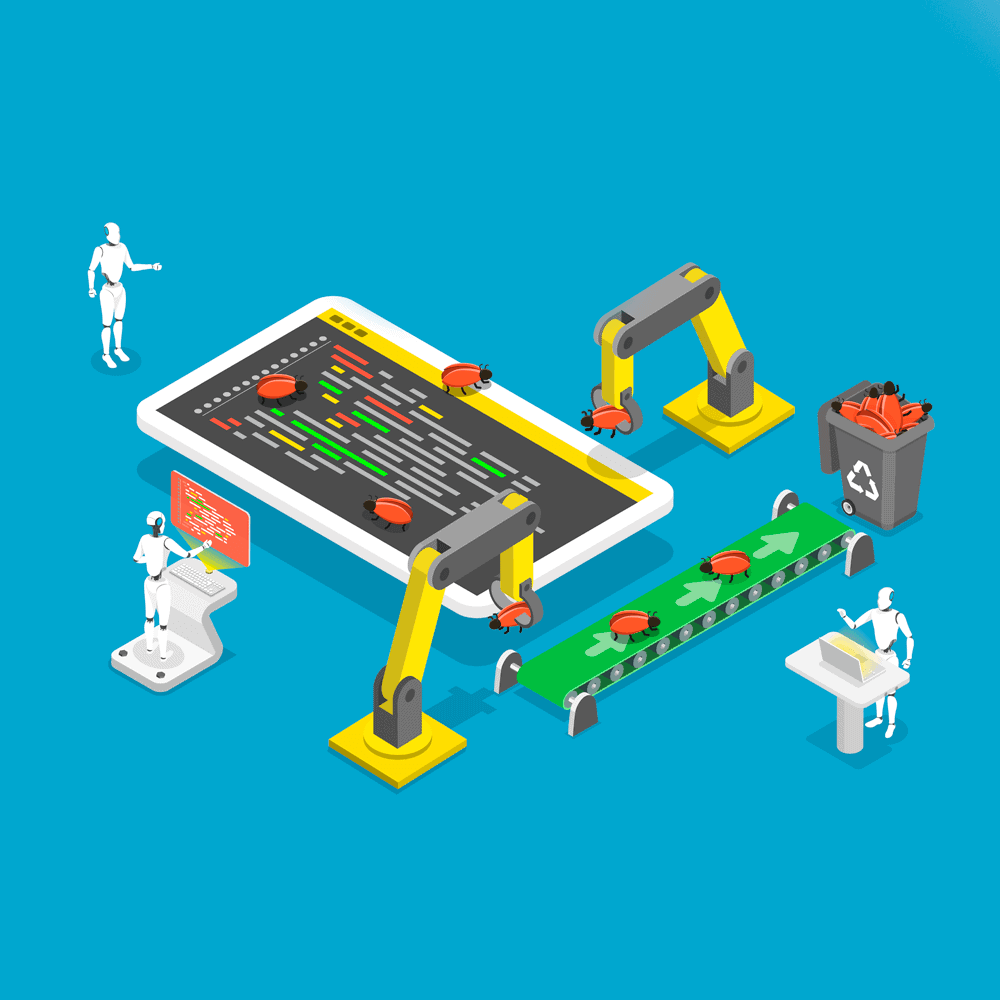 AI has enormous potential to help humans in every aspect of the way they live and work. However, most individuals understand this fact as a cautionary note. A recent survey reported that 77% of Americans stated that AI will have a “very positive” or “mostly positive” impact in the next 10 years on how people live and work.
AI has enormous potential to help humans in every aspect of the way they live and work. However, most individuals understand this fact as a cautionary note. A recent survey reported that 77% of Americans stated that AI will have a “very positive” or “mostly positive” impact in the next 10 years on how people live and work.
Another poll of public perception reported that about 82% of Americans thought AI should be managed carefully. With such contrasting views on AI, organizations should improve the quality of the build. Moreover, AI technology may be the new normal, but history shows that automation and standardization are the key factors in achieving consistent quality for the software.
For example, it is easy to find the right machine learning model for your data challenge with DataRobot, which is the leading end-to-end AI enterprise platform that helps automate and improve every stage of your path from data to value. It is not based on black box testing, but it may use the latest generation of AI to provide more user-friendly explanations and insights on how the model works and how it is suitable for making the best business decisions. It allows companies to further reduce risks and ensures consistency with customer needs, business rules, and regulations, therefore helping prevent unintended errors.
Understand the Failure Root
As you know, the chances of failure are possible in testing. Thus, both the developer and the QA tester should understand their responsibilities and identify the root problems while testing any application. This involves checking thousands of code lines.
However, AI provides the log files and allows you to detect the errors and scan the codes within seconds. Thus, when integrated into the QA process, AI can help you fix specific problems in the code in order to meet quality demands.
Harness the Power of Automation
Machine learning and artificial intelligence are two buzz phrases that are often seen on the internet. Although it is hard to entirely replace humans, companies use many tools that have a blend of both AI and ML. For example, Functionize, Testim.io, Appvance IQ, Test.ai, Applitools, and AI Testbot are some top-notch AI and ML-based tools that one can use for mobile app testing.
The inclusion of AI and ML in the software testing process helps companies improve QA testing within an organization. AI and ML can change the map of testing, so you should know the power of test automation that allows you to perform UI testing, regression testing, and API testing in the best possible ways, and it is a convenient approach for achieving effective quality assurance even in the most complicated circumstances.

by Kanika Vatsyayan | Apr 20, 2020 | Advice, Guest Post, People, Productivity, Self Improvement, Skills, Software, Testing
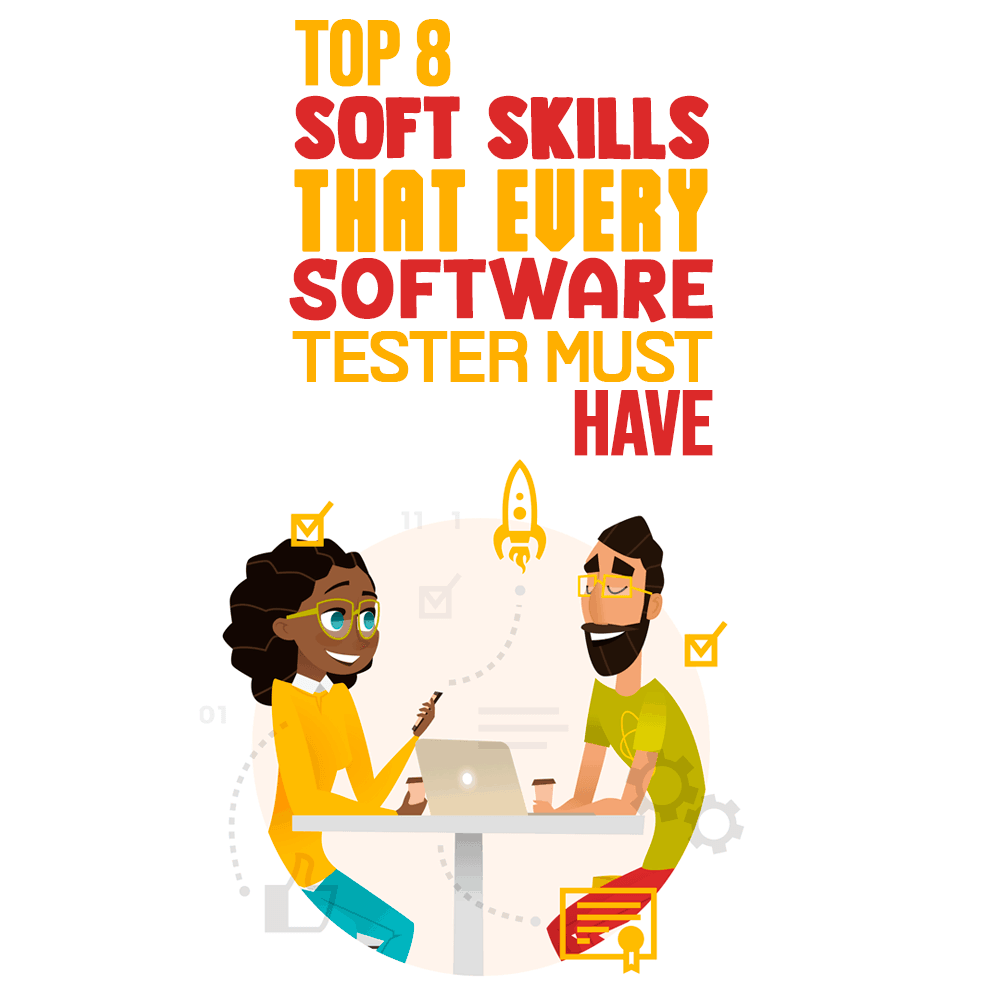 In today’s competitive digital landscape, an individual or business needs to be a pro in multiple aspects to stay ahead of rivals. Software testers are no exception—a software tester has to go the extra mile to be considered a great tester. Apart from having a strong hold on the technical side of testing, they must have great soft skills.
In today’s competitive digital landscape, an individual or business needs to be a pro in multiple aspects to stay ahead of rivals. Software testers are no exception—a software tester has to go the extra mile to be considered a great tester. Apart from having a strong hold on the technical side of testing, they must have great soft skills.
Soft skills are basically the traits and abilities that enable an individual to work effectively in the workplace. Soft skills not only help you build a great career in the software testing field, but also give you leadership and teamwork skills. You don’t need to invest a lot of time in learning soft skills; rather, these skills can be learned alongside your testing job.
The Importance of Soft Skills for Software Testers
Having the right skills and knowledge to carry out the testing process is necessary for software testers, but soft skills are equally important in order to tackle problems smartly, calmly, and with full support and team cooperation.
Whereas technical skills help a tester to sharpen their technical expertise, soft skills control the other aspects of a tester—from their work life, problems, and all other life aspects. A software tester simply needs to know a lot more beyond the testing strategies, and this is where soft skills prove their true potential.
I have noticed that whenever I get stuck while testing, it’s not always the knowledge and testing tools that solve the problem. Rather, soft skills have an equal share in the problem-solving process. Instead of escalating the issue to someone else, soft skills enable me to act wisely and make good decisions while tackling the problem smartly.
Being technically strong will definitely assist you in getting the job you have been dreaming of, but if you wish to excel in the testing field in the long run, you need to sharpen your skills and have great soft skills, as well. Emphasizing the soft skills can definitely assist you in becoming a pro in the testing industry. And since many software testers only focus on improving their testing skills, hardly anyone pays attention to soft skills (and this might be your biggest mistake).
Knowing what soft skills are useful for software testers will help you stay out of trouble and deliver accurate, bug-free, and outstanding output. It will directly help you to not only become a pro in the testing industry, but also become a great leader. It’s not the qualifications or years of experience in the testing industry that define a leader, but how wisely you manage your team and how happy the teammates are.
If you are only concerned about your professional skills and don’t invest good time in sharpening other skills to uplift the other areas of life, you are at a major loss. You need to regularly interact with your coworkers, know what’s going on, and be involved in client meetings and manager meetings, apart from finding and fixing bugs in an app. These small things will eventually help you become a great leader and a person with great exposure to handling diverse situations smartly.
Furthering your software testing skills won’t teach you teamwork or how to be a great leader, but developing your soft skills will give you the skills to manage or work with your team.
Top Soft Skills for Software Testers
Once you realize the importance of soft skills to being a great tester, leader, or team player, you will definitely love to develop your soft skills. Well, I’ll make your job easy, as I have put together a list of eight proven soft skills.
Becoming a software tester may be an easily achievable task once you get exposure to the testing tools; however, to become the most-wanted software engineer, you need to go the extra mile and think out of the box. And having a great set of soft skills will help you be an excellent test engineer who everyone in or beyond the testing industry admires.
In this guide, we are going to discuss the top soft skills that software testers should be aware of. You must try implementing every skill on a regular basis to experience the expected results. Let’s get started!
1. Be a Healthy Communicator
One of the most important soft skills is healthy communication. As a software tester or leader, you need to communicate in a manner that both technical and non-technical people can easily understand. Whenever you conduct meetings, people will gather from different departments and not everyone will be clear about the testing part. So you need to convey things in a simple and clear way, which is a part of healthy communication.
 Being a healthy communicator is always a two-way process—listening is as important as speaking. You must not only advise others, but learn to listen to others’ perspectives, as well. For instance, a software tester is an important contributor to a requirements discussion meeting. During this discussion, you can improve yourself by understanding the system while focusing on a few aspects such as asking questions frequently throughout the meeting, seeking confirmation while confused, always making eye contact with the person who is speaking or giving the presentation, maintaining a positive posture, and giving positive feedback quite often.
Being a healthy communicator is always a two-way process—listening is as important as speaking. You must not only advise others, but learn to listen to others’ perspectives, as well. For instance, a software tester is an important contributor to a requirements discussion meeting. During this discussion, you can improve yourself by understanding the system while focusing on a few aspects such as asking questions frequently throughout the meeting, seeking confirmation while confused, always making eye contact with the person who is speaking or giving the presentation, maintaining a positive posture, and giving positive feedback quite often.
And in this case, while you are organizing a meeting and you are the speaker, the first thing you need to keep in mind is to believe in yourself. Just think before you speak and try making eye contact with everyone present in the meeting. Take note of your pace and slow down if required. You must practice small conversations, and try to resolve the conflicts. Maintain positive body language throughout the meeting, as it will make difficult conversations flow easily without any effort.
Furthermore, you may find yourself talking to coworkers and clients with diverse demographics, languages, and so on. In that scenario, you need to have confidence and understanding while conveying information simply and clearly. This will help those clients or team members easily understand the idea while overcoming communication barriers.
2. Stay Proactive and Organized
For good results, software testers need to remain proactive while going through the testing life cycle and observing every individual phase with full attention. Secondly, they need to know how to manage and prioritize tasks based on deadlines, and to stay organized.
In my software testing career, I have heard most of the testers complaining that they don’t receive the expected response even after putting in so much effort while interacting effectively during the meetings. They even say that they fail to express their thoughts clearly and are often asked to repeat things throughout a session or a meeting.
Well, as per my experience, I would say that if you have clearly gathered everything you are going to carry out in the meeting in advance, you can definitely overcome all these hurdles smartly. Before organizing a meeting yourself, you must attend numerous meetings so that you can proactively analyze every single thing a speaker takes care of during a meeting—their tone, body language, confidence, how they tackle the queries, how often they make eye contact, and how they close the meeting. All these things can definitely help you in managing meetings successfully while convincing every single participant in the meeting.
While planning your projects, make sure that you prioritize so that you meet targets on time and don’t miss project deadlines. A software tester needs to be aware of how to manage their work, and perhaps even their team, effectively. You need to sit with your team, discuss the tasks everyone is assigned, and set the priorities based on the project deadlines. Once you learn how to organize your tasks and remain proactive, you will start loving your job and eventually turn into a great leader, as well.
3. Understand the User Perspective
A successful software tester should not only implement their testing strategy, but also understand the situation from the user’s perspective. You must step into the customer’s shoes, and understand their business goals, requirements, and pain points so that you can deliver desired outcomes.
Regardless of the project you are working on, customer satisfaction is one thing that must be the end result of any project. Customers expect quality outputs and are not concerned about the number of test cases created or the number of bugs you have reported; they simply want to see the quality outputs. For this, you’ll have to dig deeper about what exactly the customer is expecting from you, and what the current bottlenecks are in the project so that you can fix them right away.
To learn this skill, you must engage in client meetings where you can have face-to-face interaction with the client to listen to their problems and understand their target audience and expectations. This gives you a deeper understanding of their requirements than simply learning the project details from one of your coworkers. You must frequently attend client calls and keep them informed about every phase of the project, as well as ask for their suggestions so that you can work on those areas.
4. Be Adaptable
Since customer demands evolve every moment and the industry standards update from time to time, as a software tester you must be able to adapt. During a project, new requirements might come up suddenly, replacing the earlier ones or requiring retesting.
Adaptability is basically the ability to change your action plan as per the changing conditions. So you’ll have to bring changes to the system while ensuring that everything runs smoothly and without any hurdles or delays. Since the software industry is dynamic and keeps evolving every now and then, you must be proficient in integrating new information for drawing a conclusion, and you must be mentally ready to tackle the challenges smartly and with patience rather than stressing out. You must learn to experiment with new ideas so as to easily adapt to the unique and new client needs.
In that case, you have to be considerate and invest time with your team to plan a strategy for adapting to changes. Organize meetings and sessions with your team, take suggestions from everyone, and come up with a decision that caters to the diverse client needs.
5. Organize Meetings
 Some software testers try to carry out their testing job without getting involved in meetings. But at some point, you’ll have to engage in meetings so as to understand testing requirements more clearly.
Some software testers try to carry out their testing job without getting involved in meetings. But at some point, you’ll have to engage in meetings so as to understand testing requirements more clearly.
Usually, most of the meetings are carried out without any clear purpose and plans, and this is the reason why most of the requirements are either left unexplained or skipped. So, before you plan a meeting, you need to have a clear agenda for the meeting, make brief documents that include the discussed issues, make decisions, and identify topics to be discussed briefly. It will serve as a guide map for you and result in a successful meeting without skipping any important aspects.
Attend as many meetings as you can, and even carry out meetings to discuss client requirements, project deliverables, and what your team can do to overcome the client’s pain points.
When you plan a meeting, try to involve a minimum number of people so that the meeting is effective enough. The majority of great meetings don’t have more than eight people, as it helps in concentrating on the speakers, avoiding unwanted discussions, and limiting the information flow.
While you plan to organize a meeting, make sure that you are well prepared in advance about what will be discussed in the meeting, and make sure that every team member participates in the meeting and shares their views. Try to note the helpful insights so that you can come up with fruitful business decisions later. It will not only help you gain knowledge, but every person indulging in the session will learn a lot while participating in the meeting.
6. Understand the Product Thoroughly
Before getting into the testing phase, the foremost thing you need to carry out is an analysis of each and every aspect of the product. Having a better understanding of the product enables you to understand every phase of the product development life cycle and carry out the testing process effectively.
This will not only help you prioritize the right tests, but also help you to make better decisions in future exploratory tests. Doing this will enable you to meet customer expectations with less effort and deliver expected results on time.
7. Maintain a Positive Outlook
Despite your endless efforts and dedicated work in the testing process, there will be times when you don’t come up with the desired results or the customer dislikes the product. When this happens, you need to keep one thing in mind: Stay positive and keep your team positive throughout the software testing life cycle.
While you interact with your team, avoid using rough words and hurtful comments; rather, go for polite and constructive phrasing. This will automatically spread positivity on your team and even you’ll feel good. While carrying out desktop testing, you must try to involve and get suggestions from the developers, as well. Considering their views will not only help you technically, but even boost their productivity.
Moreover, invest a good amount of time with your team, conduct and attend regular informative sessions, or even indulge in some fun activities, as this will definitely help you maintain a positive outlook in the long run. And whenever you get stuck somewhere, there’s no need to be a pessimist about it. Rather, interact with your coworkers, discuss the problem thoroughly, and get their ideas. It will definitely help you solve the problem more smartly and stay away from negative vibes.
8. Gain and Share Knowledge
You can only grow if you are continuously learning new things about the latest tools and trends in the testing industry, and sharing what you know about the latest software testing trends with others. This will give you a clear idea of what your competitors are up to and what strategies they are using.
The majority of software testers even feel that sharing knowledge like the functionality of an app is not their job; developers are there to do that. In fact, the sad part is that many managers also believe the same. But believe me, sharing knowledge is not sharing but a part of gaining knowledge. While you share knowledge with someone, they will ask you some questions and give their views on the same. By this, you’ll get more ideas for processes and improvements. So it eventually leads to your personal growth, as well, apart from the organizational growth.
Not only should you organize sessions for others, but it is equally important that you yourself attend meetings and sessions held by other coworkers. From time to time, you should conduct and participate in sessions where you can learn new things from testing experts and even share your knowledge with new testers.
Boost Your Career With Soft Skills
 Regardless of the number of years you have spent in the testing industry, soft skills are essential for you to turn into an ideal software tester and meet customer expectations easily and quickly.
Regardless of the number of years you have spent in the testing industry, soft skills are essential for you to turn into an ideal software tester and meet customer expectations easily and quickly.
Soft skills are something that you can’t learn on a single day and expect to stay relevant for your entire life. Rather, these skills need to be updated from time to time so as to meet customer needs and reach the changing industrial standards. Testers with great soft skills need to keep themselves informed on the recent updates in the testing industry; participate in every possible webinar, conference, and client meeting; and engage with team members so that they can reach their goals and boost their professional growth.

by Kanika Vatsyayan | Dec 30, 2019 | Best Practices, Guest Post, Process Improvement, Programming, Software, Technical, Testing
Do you know why most startup software fails? Is it because of a lack of resources, exposure, skills, expertise, or capital?
Or is there another reason behind the failure of an app or software?
Actually, there is!
The prime reason behind the failure of an app is a poor or even absent software testing process during the app’s development.
Making mistakes during the development process, skipping a few steps, or leaving something unfixed during development can lead directly to an unsatisfactory user experience, which is not appreciated no matter how much effort you put in.
To avoid such issues, market influencers are adopting a software testing life cycle, and other major industries are already reaping the benefits.
According to a recent report by Zion Market Research, the global test automation market reached 15.87 billion USD in the year 2016 and is predicted to reach 54.98 billion USD by 2022. These stats should give you a fair idea about the hype surrounding test automation.
Considering the extravagance and intensive demand for advanced software testing strategies, various automated tools are put into operation to perform the execution of software testing. Earlier manual software testing procedures under the supervision of humans were performed, but automated testing has reduced the effort and along with it, records the test suite, which further helps in analyzing errors.
Relying on a suitable test automation platform can help you deliver superior quality output and bug-free products that your customers will simply love. If you want your business to outshine the competition, your focus should be on improving quality instead of adding more and more functionality to your software.
But before you make an investment in a testing platform, it’s important to be aware of some basic guidelines of the software testing sector.
Guidelines for Software Testing
To deliver high-quality services and flawless products, you need to implement quality assurance (QA) tools and methodologies. For startups, it’s essential to follow basic techniques and guidelines while carrying out a software testing process.
Here’s a list of the most proven tips and guidelines to follow during a software testing life cycle:
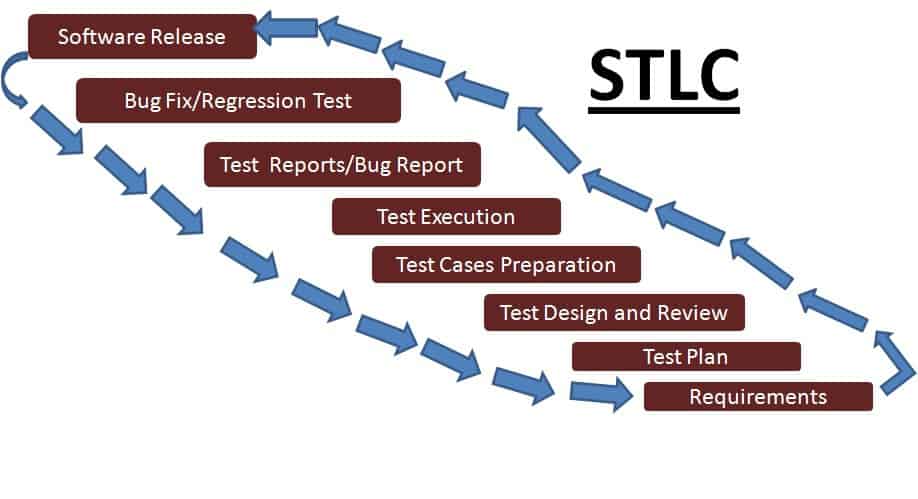
1. Plan the Complete QA Life Cycle
The test processes you’ll work with must be well-defined, planned, and thoughtfully documented. You need to emphasize documentation, as having good records will help you build efficient communication among your QA team. The QA life cycle includes a quality management plan, test strategy, test plan, and test cases.
2. Follow Test-Oriented Software Development Management
Implementing a test-oriented software development approach is the best method for improving product quality. It follows two major practices: test-driven development and pair programming. You can put these into practice with extreme programming (EX), a methodology that focuses on building a top-quality product while adapting to varying requirements.
3. Carry Out Formal Technical Reviews
A formal technical review (FTR) is a technique that identifies and reveals logical and functional errors at an early stage. The purpose of the FTR phase is to make sure that the product meets the predefined standards.
4. Implement User Acceptance Testing
Involving users in product development is a necessary step that can help you grab your target audience. To make sure that the product meets customer needs, you need to involve end-users in the testing life cycle. This can be done via user acceptance testing (UAT), which usually comes during the final stage of the development process.
Involving end-users will help you detect bugs that you wouldn’t have found normally. (For example, various users will test the software with a different mindset and vision and will check various aspects of the application, which obviously we can’t expect and which can be easily overlooked by a single user. In such processes, there is a probability to catch any left out bug or issue and get it resolved. This will let you move toward a perfect, ideal, and impeccable application.)
UAT can be performed in various ways, including alpha and beta testing, contract acceptance testing, regulation acceptance testing, operational testing, and black-box testing.
5. Healthy Communication With the QA Team
There is a wide set of activities involved in the testing process, and before you begin, you need to have a well-coordinated team that can perform the processes seamlessly. You must provide training and conduct brainstorming sessions prior to the testing phase so all team members can share and learn about the latest testing tools and techniques.
Moreover, you need to carry out regular communication with each team member to know what problems they frequently encounter and know the areas where they are lacking.
6. Use of Automated Testing
If you want to surprise your customers with flawless output, automated testing is the only thing that can take you to that level. As of now, two terms have gained the spotlight: test automation and adoption of agile methodologies.
Let’s have a look at these methodologies.
- Test Automation: It is a process used to automate repetitive tasks and other various testing tasks that are quite difficult to do manually. And automation testing is a technique where there is a comparison of actual outcome with the expected outcome, which is performed by writing scripts or using automation testing tools.
- Process: This process includes a pyramid testing strategy. There are basically three different levels. At the base there is unit level automation, then the service layer or API testing, and at the top user interface (UI) testing. The biggest percentage of test automation is performed at the base (unit level automation) as shown below.
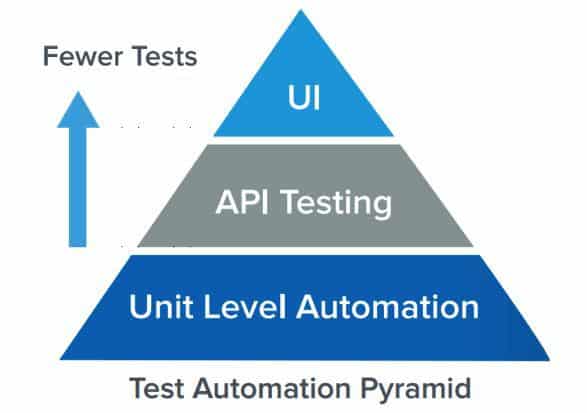
- Assimilation of UI and API: Assimilation of UI and API testing makes the automation process easier by automatically implementing the API test case-level changes at the UI level. Working with these methodologies will help you identify and fix the bottlenecks at an early stage and help you make on-time deliveries while saving you time, effort, development costs, and resources.
- Agile Methodologies: Benefits of adopting agile methodologies in software testing:
- It saves money and time.
- It reduces documentation.
- It is flexible and adaptable to changes.
- It provides a way of receiving regular feedback from the end-user.
- It helps in the better determination of issues through daily meetings.)
7. Code Quality Measurements
In order to make your software testing life cycle a success, you must ensure that all the quality objectives are reviewed, verified, documented, and measured thoroughly.
And when we talk about quality code, there’s not a single tool that can verify the code quality; rather, there are seven major indicators that define the quality: reliability, efficiency, security, maintainability, rate of delivery, testability, and usability.
8. Effective Bug Reporting
If you have a badly written bug report (or no report at all), it is difficult to track the bugs and assign them to be fixed. You must maintain a bug report that clearly defines the bugs and the areas where there is a need for improvement.
(There is quite a difference between bug reporting and effective bug reporting. Some of the characteristics of effective bug reporting are as follows:
- Assign a bug number to each bug: A unique bug number must be assigned to each bug, which later will help you to identify and maintain a bug report.
- Make sure the bug is reproducible: If a bug is not reproducible, then it’s tough to resolve. That’s why a step-by-step process must be spelled out for how to reproduce, as well as fix, the bug.
- Be specific: Try to be specific about the issue. Avoid essay writing on a bug. To-the-point issues are easy to address and resolve.)
For this, you’ll need to sit down with the developers and other team members for regular meetings so that you don’t skip a single aspect of the development and testing process.
This will help you make sure all bugs are reported and any existing issues are fixed. Otherwise, you’ll end up skipping the bugs in the software, and there is a chance that you’ll launch the software with errors.
Over to You!
It’s high time that you emphasize your product quality and present flawless, unique output that grabs the customer’s attention. Otherwise, you’ll end up repeating the development phase and working on issues encountered by customers after the launch, and you’ll have to struggle with unhappy customers.

 The future seems unimaginable without the internet—especially after all the advancements in business technology, software, applications, and devices.
The future seems unimaginable without the internet—especially after all the advancements in business technology, software, applications, and devices. The web has extensively changed over the past few years. The same could be clearly witnessed from the fact that decentralization, crypto, and AI have already disrupted the way business formation and transactions work.
The web has extensively changed over the past few years. The same could be clearly witnessed from the fact that decentralization, crypto, and AI have already disrupted the way business formation and transactions work. Over the years, the entire idea of payments and transactions has changed. Especially, the use of tokens has made payments a completely borderless process, with brands like PayPal and Stripe delivering the much-needed seamlessness between payer and payee.
Over the years, the entire idea of payments and transactions has changed. Especially, the use of tokens has made payments a completely borderless process, with brands like PayPal and Stripe delivering the much-needed seamlessness between payer and payee.

 Quality Assurance (QA) plays an important role in the software development process because it not only helps discover defects early in the development cycle but also saves a lot of time, money, and frustration. Using analytics, artificial intelligence (AI) and machine learning (ML) can be a part of your business strategy as the first step to grow revenue in companies and deliver a better customer experience.
Quality Assurance (QA) plays an important role in the software development process because it not only helps discover defects early in the development cycle but also saves a lot of time, money, and frustration. Using analytics, artificial intelligence (AI) and machine learning (ML) can be a part of your business strategy as the first step to grow revenue in companies and deliver a better customer experience. AI has enormous potential to help humans in every aspect of the way they live and work. However, most individuals understand this fact as a cautionary note. A
AI has enormous potential to help humans in every aspect of the way they live and work. However, most individuals understand this fact as a cautionary note. A
 In today’s competitive digital landscape, an individual or business needs to be a pro in multiple aspects to stay ahead of rivals. Software testers are no exception—a software tester has to go the extra mile to be considered a great tester. Apart from having a strong hold on the technical side of testing, they must have great soft skills.
In today’s competitive digital landscape, an individual or business needs to be a pro in multiple aspects to stay ahead of rivals. Software testers are no exception—a software tester has to go the extra mile to be considered a great tester. Apart from having a strong hold on the technical side of testing, they must have great soft skills. Being a healthy communicator is always a two-way process—listening is as important as speaking. You must not only advise others, but learn to listen to others’ perspectives, as well. For instance, a software tester is an important contributor to a requirements discussion meeting. During this discussion, you can improve yourself by understanding the system while focusing on a few aspects such as asking questions frequently throughout the meeting, seeking confirmation while confused, always making eye contact with the person who is speaking or giving the presentation, maintaining a positive posture, and giving positive feedback quite often.
Being a healthy communicator is always a two-way process—listening is as important as speaking. You must not only advise others, but learn to listen to others’ perspectives, as well. For instance, a software tester is an important contributor to a requirements discussion meeting. During this discussion, you can improve yourself by understanding the system while focusing on a few aspects such as asking questions frequently throughout the meeting, seeking confirmation while confused, always making eye contact with the person who is speaking or giving the presentation, maintaining a positive posture, and giving positive feedback quite often. Some software testers try to carry out their testing job without getting involved in meetings. But at some point, you’ll have to engage in meetings so as to understand testing requirements more clearly.
Some software testers try to carry out their testing job without getting involved in meetings. But at some point, you’ll have to engage in meetings so as to understand testing requirements more clearly. Regardless of the number of years you have spent in the testing industry, soft skills are essential for you to turn into an ideal software tester and meet customer expectations easily and quickly.
Regardless of the number of years you have spent in the testing industry, soft skills are essential for you to turn into an ideal software tester and meet customer expectations easily and quickly.


